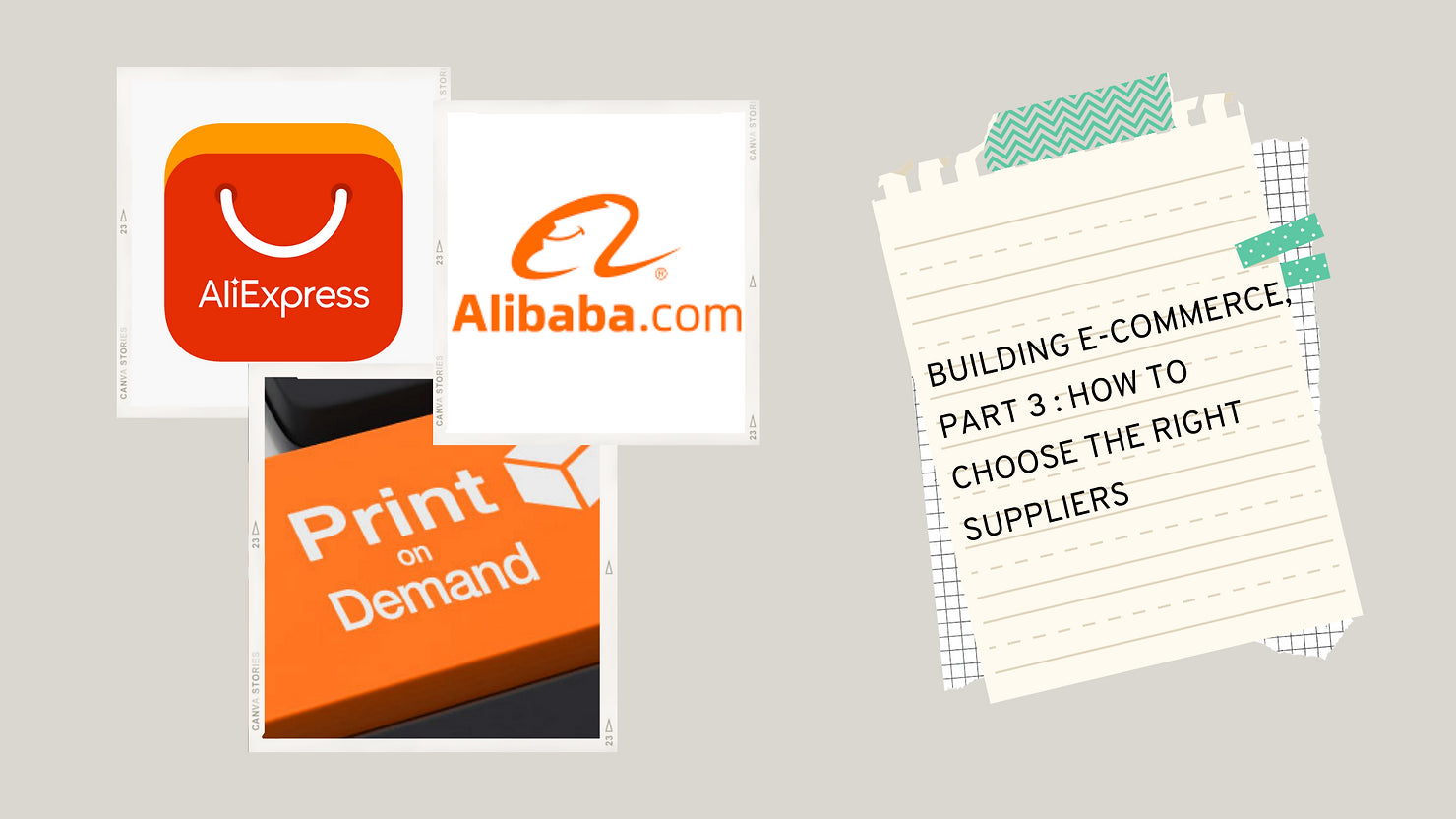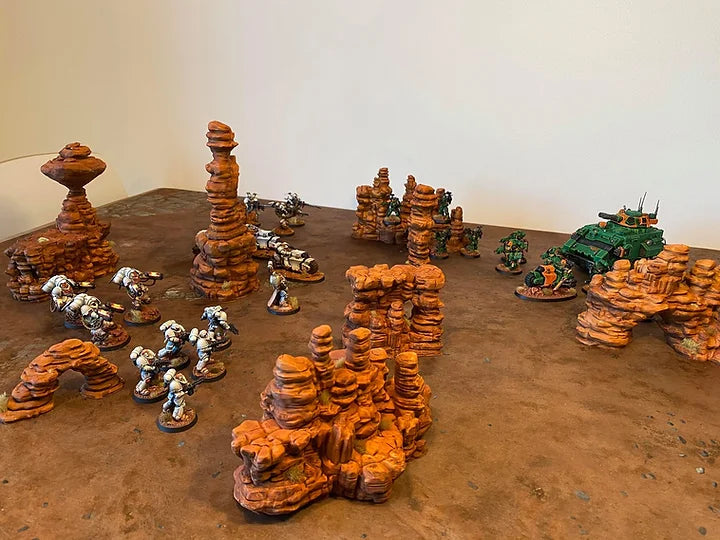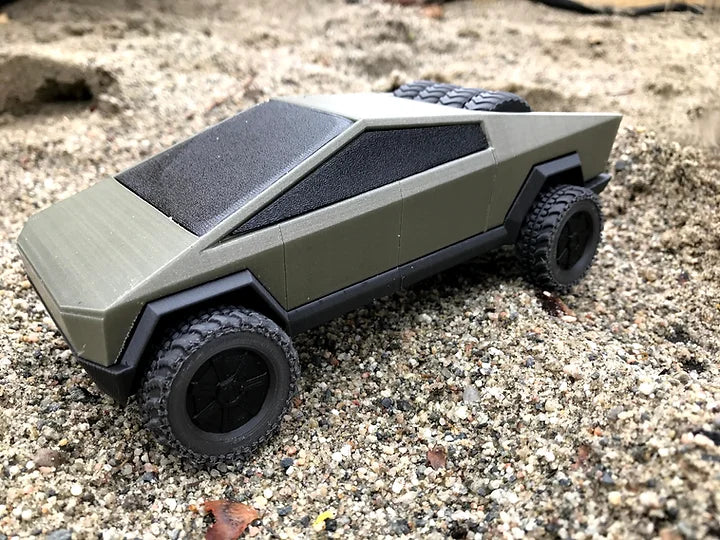Once you’ve decided which business model to adopt and what products you’d like to sell, it’s time to find a product supplier for your business, which is the third very important step in the e-commerce process.
To do so, simply use Google to search “[your product] suppliers.” For example, we searched “RC car suppliers” and instantly found some companies worth considering.

Still, you can make a good call by evaluating the following:
-
Minimum order quantity (MOQ). Minimum order quantity is the fewest units of a product that need to be purchased at one time. A manufacturer’s MOQ might be 1,000 units, whereas a retailer may require a minimum of 10 units to be purchased. Typically, suppliers with higher MOQ demand a lower price than those with lower minimum order requirements.
-
Customer reviews. Reviews tell a lot about a product supplier, but you’ll want to proceed with caution as it’s become easy for vendors to generate fake reviews. If something sounds too good to be true, it probably is. Cross-check reviews on multiple sites to evaluate the authenticity of a supplier’s business.
-
Technology. Although product suppliers tend to have outdated websites, many invest in the latest technologies to provide a better experience to their customers. Some have equipment that allows you to make custom products from scratch (more on that later), whereas others have systems that streamline the order process. The best suppliers are constantly adding new tech.
White up general things that are important when choosing a product supplier - reviews, delivery times, customization options, minimum order quantity, taxation and customs, customer support, etc…
AliExpress or Alibaba suppliers
Alibaba and AliExpress are two of the biggest marketplaces for sourcing products for dropshipping. You can find suppliers for everything from industrial equipment to convenience products on these sites. The two most important things while evaluating AliExpress suppliers are their feedback score and shipping conditions.
Ensure the supplier has at least 95% overall rating or above. Then dig into their shipping conditions by clicking on the shipping method displayed on a product listing.

Check delivery times, shipping method, costs, and warehouse options before choosing a supplier for dropshipping.
White- label products
When researching suppliers, you may want to inquire about white labeling. This is a popular business model in which a manufacturer develops an unbranded product and lets sellers customize it with their branding, packaging, and logo design. Think of it as branded drop shipping, as the supplier is still responsible for shipping the item to your customer.
With white labeling, you can develop your own product brand to increase customer recognition and loyalty. It also helps you avoid the risk of getting into a price war with other retailers, as they won’t be able to sell your brand for less than you do. But remember, with great power comes great responsibility. It’s your job to ensure your product brand wins customers over rather than leaving you with a huge pile of unsold inventory.
Making custom products
You can also get in touch with manufacturers and pitch your idea to make custom products. This is different from white labeling in that you have control over the product’s components, materials, characteristics, and manufacturing details. As such, you can ensure whatever goes into your product is based on people’s needs.
The downside of making custom products is the length of the process. Usually, it takes months to arrive at the point where you’re ready to do a test run. Plus, custom products are manufactured at scale, requiring much higher volumes than white or private label items.
Print-on-demand
A cross between white labeling and custom product making, print-on-demand (POD) allows you to apply your own custom designs on various types of products. POD items include t-shirts, books, jewelry, and many others.
Essentially, a print-on-demand supplier provides you with a blank product and you apply your artwork/graphic to it (often using a digital tool offered by the supplier). Then you display the finished product in your store and wait for a sale, after which a print-on-demand company prints the item and ships it to the customer.
-
Introduce a new line. Promote custom products on your website and see how the audience responds without a lot of upfront investment.
-
Create branded merchandise. POD is a great option for creators looking to sell their own merchandise. You can sell custom merch on Twitch, YouTube, TikTok, and several other platforms.
-
Print one-off items. Customize wall art, mugs, t-shirts, shoes, phone cases, and more. You can keep these products for a special sale or offer them to your loyal customers at a discount.
But with print on demand, your ability to stand out depends on the product and vendor. You’ll have to weigh product choices, mockup tools, and printing technology when deciding how to proceed.
3D print-on-demand
3D print-on-demand works similarly to print-on-demand – the key difference is the type of products you can sell. With 3D printing, you can create highly unique items with designs that are not attainable with standard printing processes. Using 3D print-on-demand dropshipping services can be an excellent business strategy for creators and online merchandise companies.
You’ll benefit from:
-
Zero up-front costs
-
No warehousing required
-
Endless customization options
-
Unique design capabilities
-
The product is manufactured in the same country as the end customer so saves time and cost for shipping
-
Products are only made after they are bought so there is no overproduction which is the most sustainable production option
Your customers will appreciate that you can offer high-quality custom products, fast shipping, and top-notch customer service. As a result, you will have a thriving e-commerce store that gives you the freedom to work from home, make your own schedule, and spend more time with your family.
When to choose 3D-printed products
3D-printed products provide endless opportunities to a merchant. You can make a variety of different types of products with a personalized design to sell to your customers. Certain product categories are ripe for introducing 3D-printed items, including:
-
Crafts & Supplies
-
Handmade Items
-
Wedding Essentials
-
Jewelry
-
Home Décor
Consider designing your own products for these categories. For example, you can design miniatures, and cosplay items (props, helmets, etc.) to sell in the crafts & supplies niche. If you choose to sell Wedding Essentials, you could offer custom nameplates for couples, guests, bridal parties, and more. With print-on-demand drop shipping, you won’t have to worry about production, packaging, and shipping.
Using a 3D print provider also helps you become sustainable, as products can be made with zero waste. You can incorporate the sustainability factor into your brand image to attract more people to your new business.
Partner With Vulkaza 3D Printing
Vulkaza is a top 3D printing solution for e-commerce store owners. When you partner with Vulkaza, you don’t have to worry about storing your product, performing quality checks, packing, or shipping. Focus on designing great products, marketing them on social media, and providing great customer service – we will do the rest! Contact us today to get started.
Let's unwind sleeves and go establish that fantastic e-commerce empire now that we've covered all three important aspects of creating an e-commerce business!



